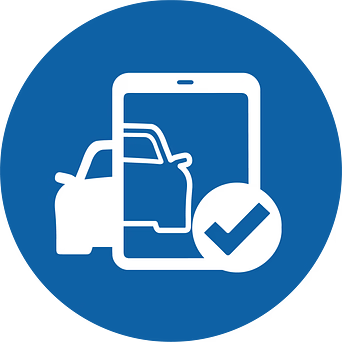Self-service kiosks may not be the intelligent robots we dreamed of in science fiction movies—but they do have the power to change the service industry as we know it. Every day more companies implement self-service kiosks into their businesses, and every day, consumers adjust to the new technology. There are many perceived benefits to using self-service machines: they can be faster, more efficient, more accurate, and even more personalized. As higher wages become the standard, businesses are realizing they may be able to use these kiosks to alleviate costs. If this technology has so much potential, then why are they so controversial?
The controversy may come from the persistent fear that these machines will eventually replace people. The “man vs. robot” theme is popular in science fiction movies, but not something that people generally discuss in their day-to-day business lives. Managers are wary of the potential costs and accuracy of these machines, and employees worry about becoming obsolete. Although the prospect of a purely digital service industry may seem overwhelming, we need not be fearful of this trend in technology. The truth is, these self-service kiosks are not going to completely replace people any time soon. The trick is to use the technology to enhance the human element instead of replacing it.

Are Self-service kiosks our future?
Do you remember using the self-checkout line at the supermarket for the first time? Chances are it didn’t go as smoothly as you had initially thought. Consumers using the self-checkout line are suddenly expected to use technology they have never used before—and this comes with its own concern. “New Technology Anxiety” is something consumers can feel when faced with unfamiliar technology. More managers need to be aware of this potential anxiety before leaving customers alone with a new self-service system.
Also, because self-checkout lines have their own parameters for avoiding theft and misuse, they tend to be more clunky and frustrating, rather than smooth and convenient. However, when you used that supermarket self-checkout, there was most likely an attendant quietly standing to the side. This attendant is the key to self-service. As Forbes simply puts it, “…all of this is great … until something goes wrong. Then there has to be a backup plan, and that backup is usually a human on a phone or behind a ticket counter.”[1]
Where we’re at now, and where we will soon be demands that technology and human beings work together, not compete against each other. In a study conducted by MITSloan Management Review, it was found that there are some big differences between what managers believe self-service kiosks should be, and what consumers actually want; one of the largest disconnects was on the importance of an employee or attendant alternative. Whereas managers felt that self-service kiosks would eliminate the need for paid employees altogether, consumers explicitly stated the desire for at least one available employee, just in case.[2]
Don’t let the fear of self-service technology keep you from utilizing this technology to its fullest potential. As long as businesses have an awareness of what their consumers want out of their experience (convenience, speed, and a little support), they can implement self-service kiosks in a way that ultimately helps their employees perform their own jobs more efficiently—and changes their consumer experience drastically, for the better.

 Harmony AI
Harmony AI Intelligent Appointments
Intelligent Appointments Tablet Vehicle Check-In
Tablet Vehicle Check-In Digital MPI
Digital MPI UpdatePromise App
UpdatePromise App AI-Driven Status Updates
AI-Driven Status Updates Dashboard Analytics
Dashboard Analytics AutoRepair-Review.com
AutoRepair-Review.com Full Merchant Services
Full Merchant Services Clover & Payment Devices
Clover & Payment Devices SmartPath Service
SmartPath Service MONOGRAM Service
MONOGRAM Service Honda
Honda Acura
Acura Audi
Audi Hyundai + Genesis
Hyundai + Genesis Sunbit
Sunbit All Features
All Features

